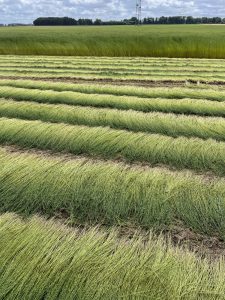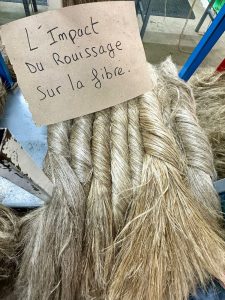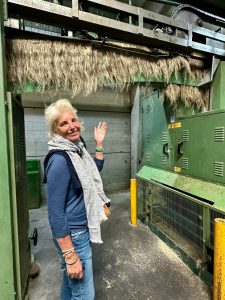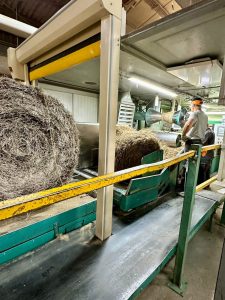Relive our Festival of Linen journey through the flax fields of Normandy

In the quiet corners of Upper Normandy, France, where the breeze carries the scent of the sea and the gentle rustle of flax fields, Christine Daron, Founder of African Jacquard, took on a journey to reconnect with the roots of linen where she spent three days.
In July, she had the privilege of attending the annual Festival of Linen, a celebration that honours a fabric coming from the cultivation of a plant and way of life deeply intertwined with the history and landscape of this region.
The Festival, now in its 32nd year, is a vibrant event that unites nine communities in the Caux area for four days of exhibitions and hands-on workshops. It draws thousands of visitors, all captivated by the unique qualities of flax and the stunning landscapes it shapes.
Upper Normandy is responsible for producing 50% of world flax supply. The region’s relationship with linen spans millennia, yet it faced a decline in the modern era due to the rise of cotton—a fabric that became synonymous with convenience and affordability. As the fashion industry continues to shift towards sustainability, linen is experiencing a renaissance. Its eco-friendly credentials, from low water usage to soil-regenerating properties, make it a favourite among designers and conscious consumers alike.
At the heart of the Festival stood the Chateau of Embrin Lin, home to the Menager family, who have been flax producers for four generations. The chateau’s grounds, rich with history and brimming with the vibrant green of flax fields, offered Christine a firsthand look at the meticulous process of linen production. From the field to the finished fabric, she observed the dedication and skill required at early stage (cultivation of the plant) and last stage (sewing beautiful linen woven in France).
Christine also visited the Farm Couroyer in the community of Angiens where she observed how the plant of flax is pulled down to the soil. It remains in the soil for one month for retting. This process gives the flax a unique grey colour.


One of the many highlights was experiencing the different colours of the flax fibres, which were a result of varying weather conditions. The delicate interplay of rain and sun creates a palette of natural hues that differ each year—a testament to the living nature of this ancient crop. This year, the abundant rains had been a double-edged sword, nourishing the flax but also delaying the harvest. Yet, even with these challenges, the flax plants stood tall, some reaching up to a meter in height.
Christine’s experience reaffirmed our commitment to our mission of preserving the art of textile craftsmanship while embracing innovative, sustainable practices.
If you’re interested in experiencing our work firsthand, we invite you to explore our creations in our online store at https://africanjacquard.com/shop/.


